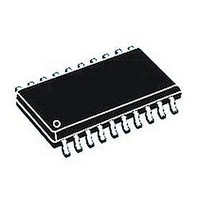MB95F264KPF-G-SNE2 Fujitsu, MB95F264KPF-G-SNE2 Datasheet - Page 25

MB95F264KPF-G-SNE2
Manufacturer Part Number
MB95F264KPF-G-SNE2
Description
MCU, 8BIT, 20K FLASH, 8FX, 20SOP
Manufacturer
Fujitsu
Datasheet
1.MB95F264KPF-G-SNE2.pdf
(92 pages)
Specifications of MB95F264KPF-G-SNE2
No. Of I/o's
17
Ram Memory Size
496Byte
Cpu Speed
16.25MHz
No. Of Timers
1
No. Of Pwm Channels
2
Core Size
8bit
Program Memory Size
20KB
Oscillator Type
Internal, External
Controller Family/series
MB95260H
Available stocks
Company
Part Number
Manufacturer
Quantity
Price
Company:
Part Number:
MB95F264KPF-G-SNE2
Manufacturer:
Fujitsu
Quantity:
500
■ NOTES ON DEVICE HANDLING
• Preventing latch-ups
• Stabilizing supply voltage
• Notes on using the external clock
■ PIN CONNECTION
• Treatment of unused pins
• Power supply pins
• DBG pin
• RST pin
DS07–12627–6E
When using the device, ensure that the voltage applied does not exceed the maximum voltage rating.
In a CMOS IC, if a voltage higher than V
is neither a medium-withstand voltage pin nor a high-withstand voltage pin, or if a voltage out of the rating
range of power supply voltage mentioned in "1. Absolute Maximum Ratings" of “ ■ ELECTRICAL CHAR-
ACTERISTICS” is applied to the V
When a latch-up occurs, power supply current increases significantly, which may cause a component to be
thermally destroyed.
Supply voltage must be stabilized.
A malfunction may occur when power supply voltage fluctuates rapidly even though the fluctuation is within
the guaranteed operating range of the V
As a rule of voltage stabilization, suppress voltage fluctuation so that the fluctuation in V
at the commercial frequency (50 Hz/60 Hz) does not exceed 10% of the standard V
fluctuation rate does not exceed 0.1 V/ms at a momentary fluctuation such as switching the power supply.
When an external clock is used, oscillation stabilization wait time is required for power-on reset, wake-up
from subclock mode or stop mode.
If an unused input pin is left unconnected, a component may be permanently damaged due to malfunctions
or latch-ups. Always pull up or pull down an unused input pin through a resistor of at least 2 kΩ. Set an
unused input/output pin to the output state and leave it unconnected, or set it to the input state and treat it
the same as an unused input pin. If there is an unused output pin, leave it unconnected.
To reduce unnecessary electro-magnetic emission, prevent malfunctions of strobe signals due to an increase
in the ground level, and conform to the total output current standard, always connect the V
pin to the power supply and ground outside the device. In addition, connect the current supply source to the
V
It is also advisable to connect a ceramic capacitor of approximately 0.1 µF as a bypass capacitor between
the V
Connect the DBG pin directly to an external pull-up resistor.
To prevent the device from unintentionally entering the debug mode due to noise, minimize the distance
between the DBG pin and the V
The DBG pin should not stay at “L” level after power-on until the reset output is released.
Connect the RST pin directly to an external pull-up resistor.
To prevent the device from unintentionally entering the reset mode due to noise, minimize the distance
between the RST pin and the V
The RST/PF2 pin functions as the reset input/output pin after power-on. In addition, the reset output of the
RST/PF2 pin can be enabled by the RSTOE bit of the SYSC register, and the reset input function and the
general purpose I/O function can be selected by the RSTEN bit of the SYSC register.
CC
pin and the V
CC
pin and the V
SS
pin with low impedance.
SS
pin at a location close to this device.
CC
CC
or V
CC
or V
pin or the V
SS
SS
CC
CC
pin when designing the layout of the printed circuit board.
MB95260H/270H/280H Series
pin when designing the layout of the printed circuit board.
power supply voltage.
or a voltage lower than V
SS
pin, a latch-up may occur.
SS
is applied to an input/output pin that
CC
value, and the transient
CC
CC
ripple (p-p value)
pin and the V
25
SS












